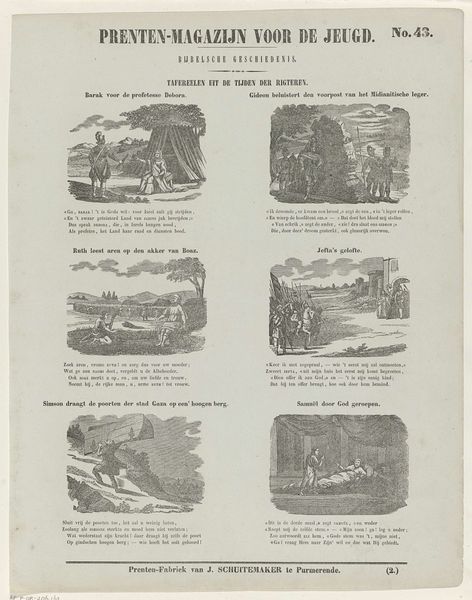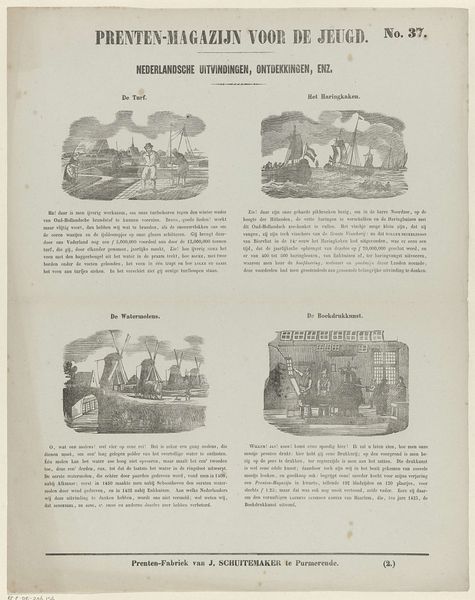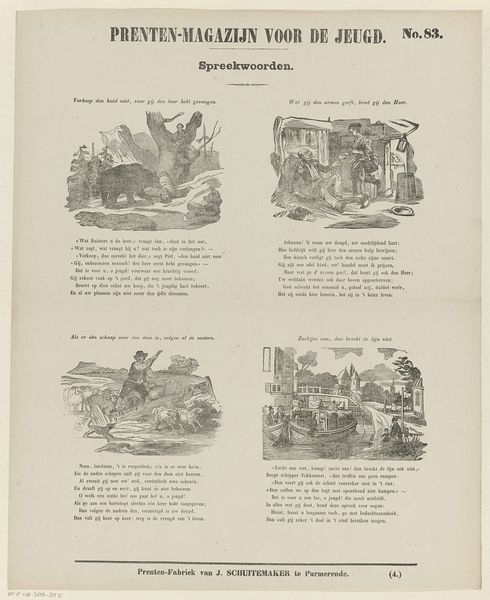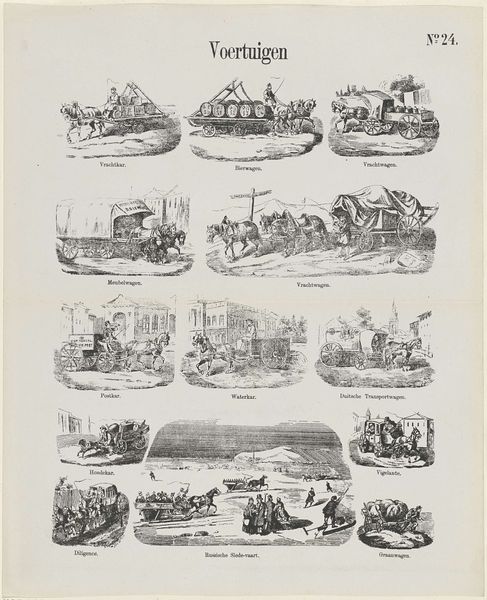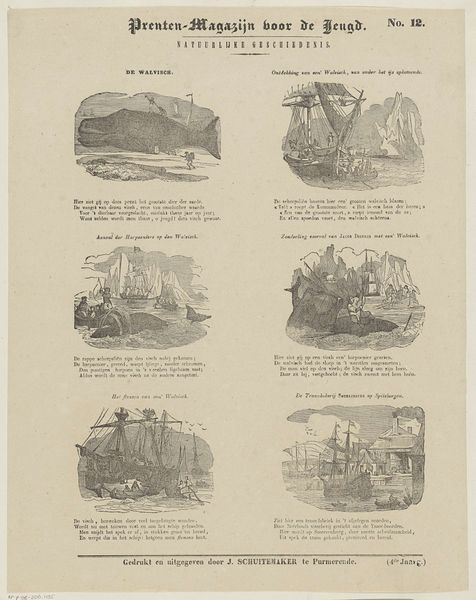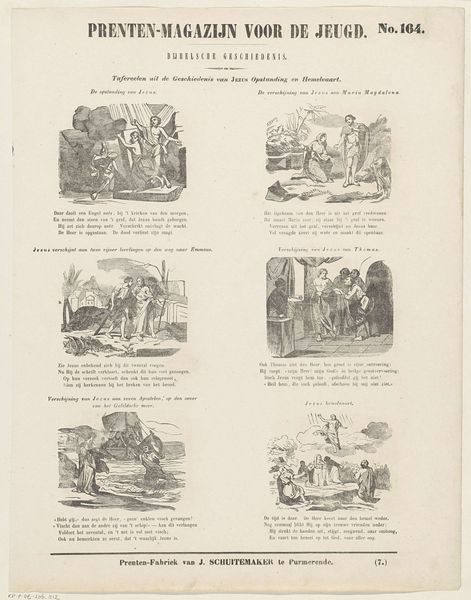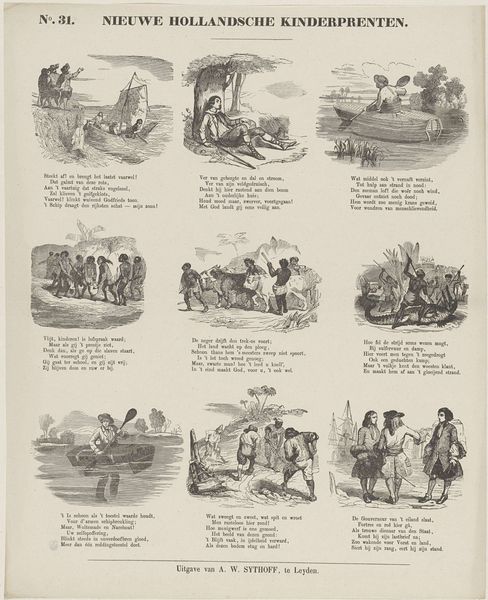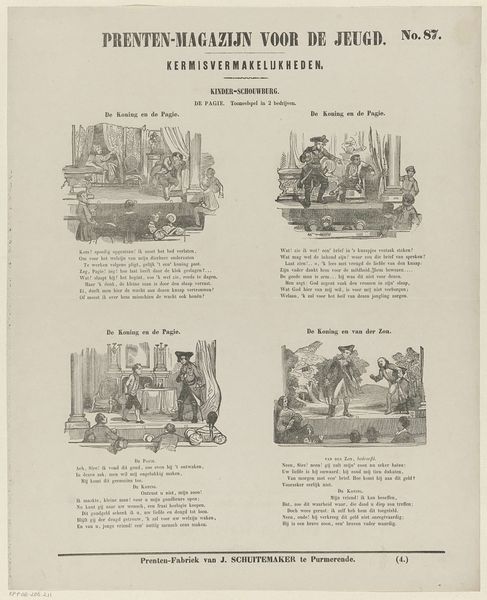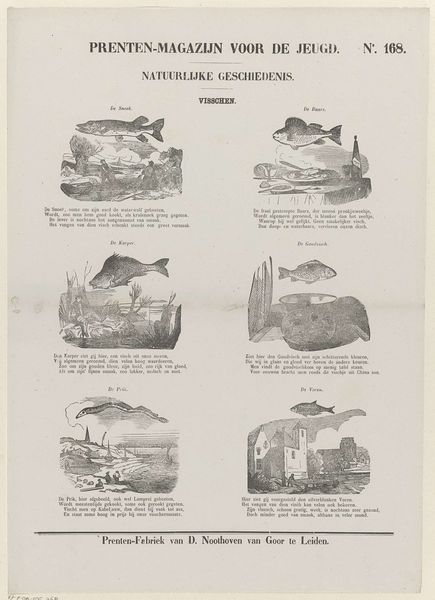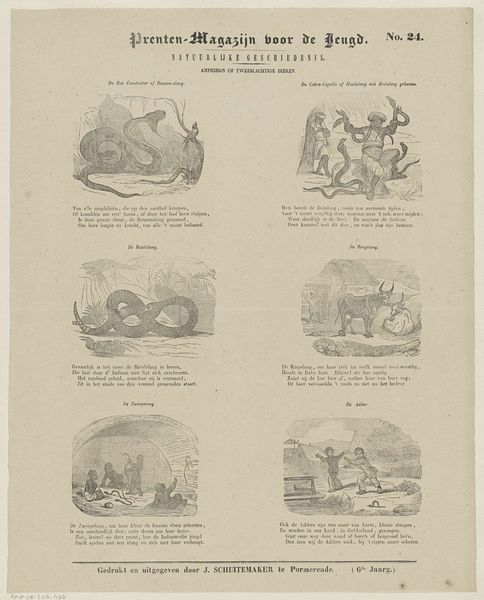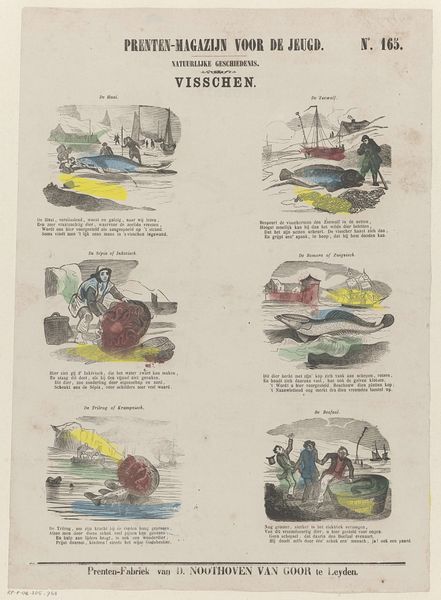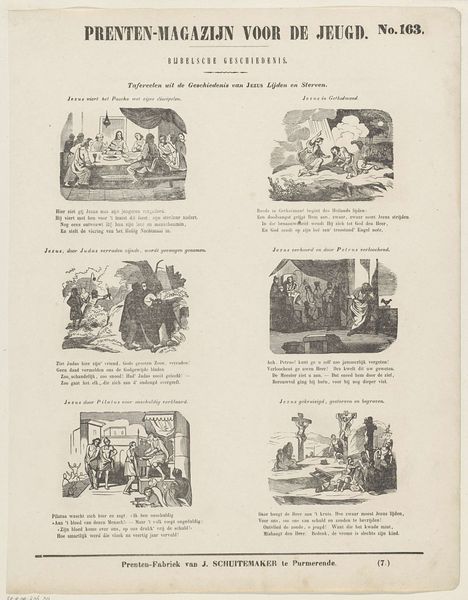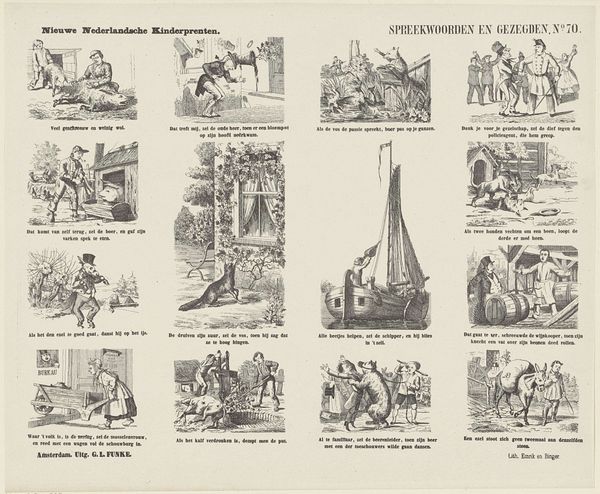
print, engraving
#
comic strip sketch
#
narrative-art
#
dutch-golden-age
# print
#
old engraving style
#
traditional media
#
personal sketchbook
#
idea generation sketch
#
sketchwork
#
journal
#
sketchbook drawing
#
genre-painting
#
storyboard and sketchbook work
#
sketchbook art
#
engraving
Dimensions: height 417 mm, width 291 mm
Copyright: Rijks Museum: Open Domain
Curator: Here we have "Visschen" by Dirk Noothoven van Goor, an engraving that likely dates between 1850 and 1881. It looks like a page from a children's magazine? Editor: It’s oddly charming. A bit crude, but also humorous with its little vignettes. I'm immediately drawn to the almost caricatured style. It has that appealing old engraving aesthetic. Curator: Van Goor ran a "Prenten-Fabriek," so printmaking was very much his domain, geared toward children's educational materials. These scenes seem to depict different fish, though perhaps not entirely realistically, from "De Haas" to "De Zeewolf" – the Sea Wolf. It seems like they aimed to entertain as much as inform. Editor: The choice of animals to showcase is certainly curious! Beyond merely illustrating aquatic life, they seem like metaphors, archetypes even. A 'sea wolf', a 'trembling crab' these creatures quickly become symbols. Curator: Indeed. Consider how publications shaped understandings of the natural world for young audiences at that time. Beyond scientific accuracy, the visual presentation could reflect prevailing cultural attitudes or moral lessons associated with specific creatures. "De Sepia of Inktvisch", which might translate to 'Sepia the Octopus' is a character with a suitcase, perhaps on a journey. Editor: Look at that octopus character – with its luggage and vaguely human stance. There’s a strong element of storytelling implied within the animal forms themselves. These pictures were undoubtedly effective ways of not only conveying what the animals looked like but also giving these animals identities and backstories for their readers to attach to. Curator: Exactly, and as a form of "natuurlyke geschiedenis", they likely also aimed to impart knowledge about geography and foreign cultures through these animal portrayals. What messages do these images perpetuate, perhaps unconsciously? It's intriguing to speculate on that social level. Editor: A critical aspect is considering the impact on its audience. These were meant to educate, sure, but how do narratives subtly shape their perceptions of "foreignness," "the sea," the creatures that lived outside familiar spaces. These stories are very potent shapers of social outlook. Curator: Thinking about van Goor's “Prenten-Fabriek” on a factory-level – how images got circulated, consumed, what purposes did illustrations serve. The blending of natural history and perhaps folklore makes it intriguing. Editor: Right, the narrative function merges seamlessly with potential ideological or societal influence. Fascinating that even an image meant for children can reflect wider dynamics!
Comments
No comments
Be the first to comment and join the conversation on the ultimate creative platform.
